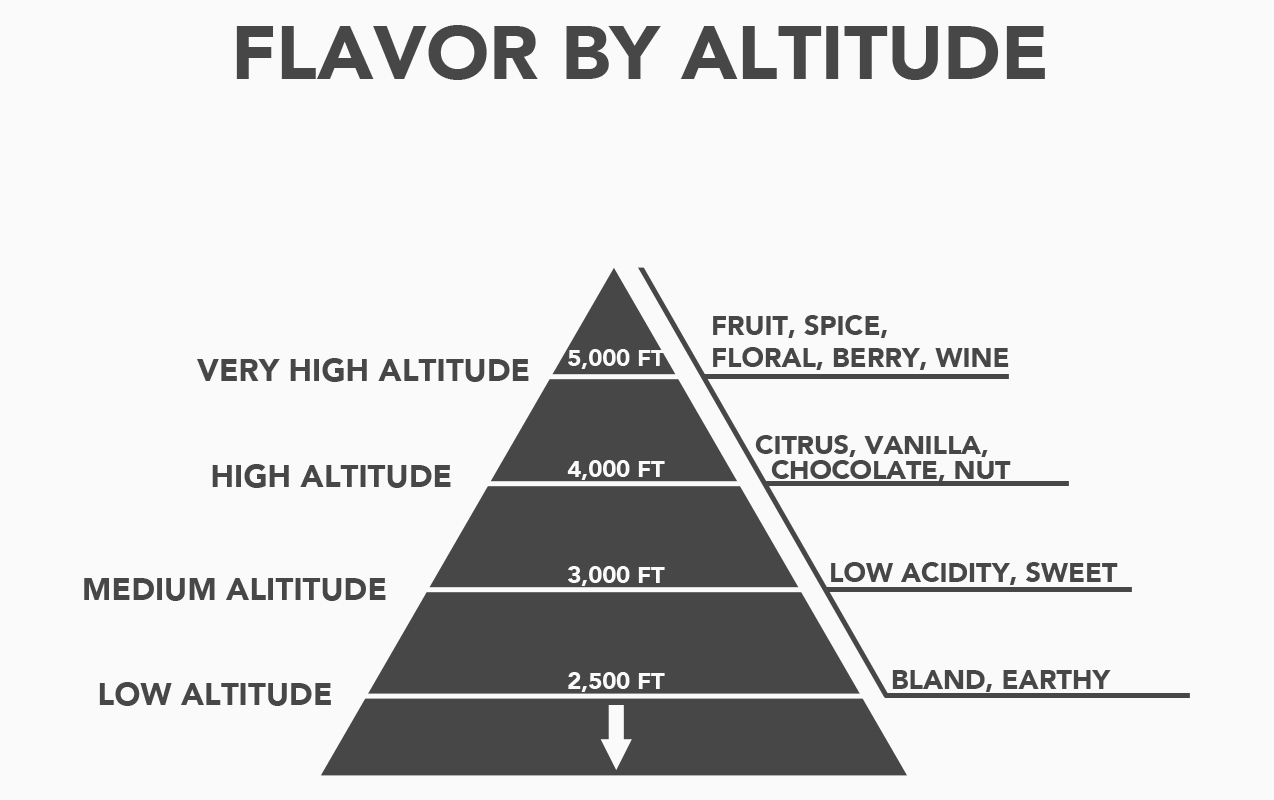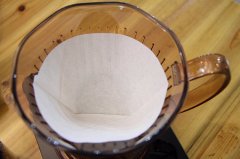The effect of altitude on coffee quality and flavor Why is higher altitude better?
Have you asked the barista about the origin of the coffee? If you ask, the answer you get is bound to confuse you. Among all kinds of technical terms, you must have heard the word "altitude". The question is, what does "altitude" have to do with the coffee we drink? Why is altitude so important for coffee?
1 the importance of altitude
Altitude, that is, the altitude at which coffee grows, will directly affect the size, appearance and taste of coffee beans. Of course, you can't just walk into the coffee shop and tell the barista how much altitude you want to drink, but understanding altitude can help you understand coffee better.
In another article about how growers choose coffee varieties, I once said that altitude and climate affect coffee growers' choice of coffee beans. To put it simply, Arabica coffee likes to grow in the plateau with cool climate between 1800 and 6300 meters above sea level, while Robusta coffee likes to grow in lowland areas with warm climate between 600 and 2400 meters above sea level. From this we can see that altitude will greatly affect the quality and taste of coffee.
2 how to judge the altitude of coffee growth?
Altitude will directly affect the appearance of coffee beans. When you take a closer look at raw coffee beans, you will find that the size and density of each kind of coffee are different. Are the coffee beans in your hand small and dense? Is the gap in the middle of the bean tightly closed or open? Is the gap straight or curved? Is the color of coffee beans close to jade, light green or blue? The shape characteristics of the bean body can directly reflect the growth altitude of coffee beans.
The best quality coffee beans are usually strong and grow at an altitude of more than 4500 meters. The growth of these coffee beans is very slow, so the density of the beans is very high, and the gap in the middle of the beans should be curved. In contrast, coffee beans grown at low elevations usually have a lower density and slightly open gaps in the middle. As for the color of the bean, the growing environment of the coffee bean and the processing technology of the raw bean will affect the color of the coffee bean. If the same kind of coffee beans produced on the same plantation are treated differently, for example, one batch is washed with water and the other batch is treated with honey, then the colors of the two batches of beans will be very different. Generally speaking, the density of bean body is the most powerful basis to judge the altitude of coffee bean growth.
Why the higher the altitude, the better?
To put it simply, the higher the altitude at which coffee beans grow, the better they taste. Coffee beans grown at high elevations have pleasant acidity, rich aroma and rich taste, which everyone likes; on the contrary, coffee grown at low elevations has almost no sour taste, single taste and plain taste. That's why baristas always emphasize altitude. If your barista tells you that your coffee grows on a plateau 5200 meters above sea level, then this cup of coffee is definitely worth savoring.
Although altitude is only one of the many factors to measure the quality of coffee, it is definitely the most important one. The next time you go to the coffee shop, please ask the barista to tell you the origin of the coffee in the cup, which will not only enrich your coffee knowledge, but also improve your overall coffee experience!

Important Notice :
前街咖啡 FrontStreet Coffee has moved to new addredd:
FrontStreet Coffee Address: 315,Donghua East Road,GuangZhou
Tel:020 38364473
- Prev

What does the third wave of boutique coffee mean after 20 years?
The third wave of boutique coffee has lasted for 20 years. Do you know what that means? Scandinavians have come up with the concept of boutique coffee (Nordic people are born to experiment and pioneer), and Americans are responsible for leading the world: planting, picking, processing, baking, education (complete SCAA system), production, packaging, marketing. And the outstanding representatives of these Americans: the most recent foray into Asian society
- Next

The trick to making good coffee is to master the six elements.
Whether it's making a cup of Espresso or filtered hand-brewed coffee, the key point is to master the six elements. The specific grinding degree of powder to water corresponds to the optimization of brewing methods (soaking method, mixing method, filter type, etc.) operation skills (stirring, water temperature, disturbing flow, etc.). The general factors of good water quality and suitable filtration media are these six points, but in the actual process of making coffee, you want to be smart.
Related
- Detailed explanation of Jadeite planting Land in Panamanian Jadeite Manor introduction to the grading system of Jadeite competitive bidding, Red bid, Green bid and Rose Summer
- Story of Coffee planting in Brenka region of Costa Rica Stonehenge Manor anaerobic heavy honey treatment of flavor mouth
- What's on the barrel of Blue Mountain Coffee beans?
- Can American coffee also pull flowers? How to use hot American style to pull out a good-looking pattern?
- Can you make a cold extract with coffee beans? What is the right proportion for cold-extracted coffee formula?
- Indonesian PWN Gold Mandrine Coffee Origin Features Flavor How to Chong? Mandolin coffee is American.
- A brief introduction to the flavor characteristics of Brazilian yellow bourbon coffee beans
- What is the effect of different water quality on the flavor of cold-extracted coffee? What kind of water is best for brewing coffee?
- Why do you think of Rose Summer whenever you mention Panamanian coffee?
- Introduction to the characteristics of authentic blue mountain coffee bean producing areas? What is the CIB Coffee Authority in Jamaica?

